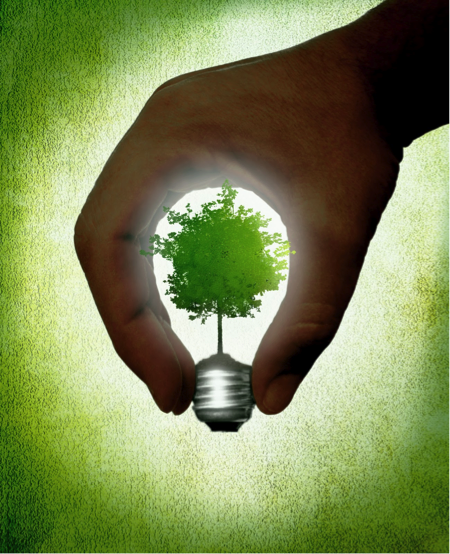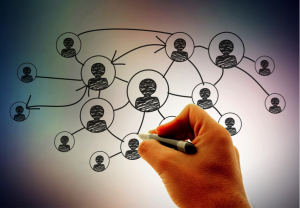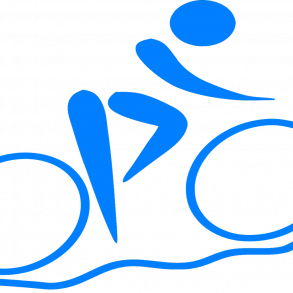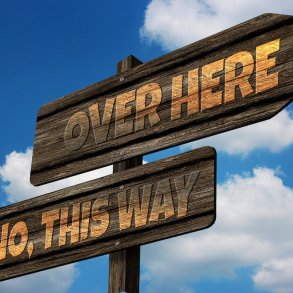By Jenna L. McNeil and Oskar Schwarzin for Enlivening Edge Magazine
In the July issue of The Enlivening Edge, we introduced the concept of sustainable Teal organizations in our article, Could Teal be the New Green?
Now we will take you on a deep dive into the outcomes of our research and provide a number of recommendations to consider when you yourself are wanting to make the transition towards a more agile operating system, as advocated by Teal organizations. For this article, the intended audience are individuals within organizations which are currently either not intending to make the leap towards Teal or are not aware of the potential that this transition provides.
But first, let us give a quick recap of the last article. The world is at a crossroads; the current predominant system is not able to respond effectively or appropriately to the crises that are infringing on the comforts of modernity and exposing the broken promises to the developing world. Turn on the news and you will see the latest ripple effects from the trembling Chinese economy, global temperatures showing record-highs year after year, or the dysfunctional approach that the European Union takes to tackling the growing mistrust between its member states. Head to work for the day and you will find that individual optimism is routinely trumped by collective pessimism, and attempts to create change are squashed by bureaucracy and day-to-day pressures.
But look closer, listen a little longer, and you will sense that there are evolutions under way – some small, others growing more and more mainstream – that attempt to counter the chaos. A whole new paradigm of organizations is emerging: being driven by a purpose in service of humanity.
One such organizational model, introduced by Frederic Laloux, is that of Teal Organizations, organizations that have three characteristics at their core: self-management, wholeness, and evolutionary purpose. In addition to this organizational paradigm, we highlighted the Framework for Strategic Sustainable Development (FSSD) in the first article to provide a scientific foundation of sustainability to these purpose-driven organizations in order to address the sustainability challenge.
It is often isolating to be the only one trying to change the ways of working and being within an organization, but role-modeling Teal behaviours on an individual level is an essential first step. The recommendations below focus on actions that individuals can pursue – even if they have no allies within their organization
What does this mean to individuals that work in traditional organizations that follow the mechanistic paradigm of higher, faster, and stronger at any cost? There is always an interplay between the effort one puts into their personal development, and the struggle to mobilize their entire organization. It is often isolating to be the only one trying to change the ways of working and being within an organization, but role-modeling Teal behaviours on an individual level is an essential first step.
The recommendations below focus on actions that individuals can pursue – even if they have no allies within their organization – in order to propel organizational development and create conditions for sustainability innovations. When it comes to sustainability, individual action can become difficult to pursue in isolation when the collective does not seem to be mobilized.
For all of us change-makers, it can be helpful to remember Otto Scharmer’s words:
“Energy follows attention. Wherever you place your attention, that is where the energy of the system will go. “Energy follows attention” means that we need to shift our attention from what we are trying to avoid to what we want to bring into reality.”
Here are a number of recommendations that arose from our research results and our deep involvement with both the Framework for Strategic Sustainable Development and Teal Organizations on a theoretical basis, and our case study, Future Considerations, an aspiring Teal Organization, on a practical basis.
Familiarizing yourself with the FSSD
In order to understand how your organization can move towards becoming more sustainable, it is necessary to have a solid foundation and a holistic approach based on scientific principles. A proposed project that appears to be a worthwhile investment of energy and resources, often ends up being socially or environmentally detrimental despite good intentions. One way to gain the basic level of expertise required is to visit The Natural Step and check out the resources they offer. To complement this, it is a good idea to look for Communities of Practice around the topic of the FSSD in order to learn from other learners.
Three areas we suggest you focus on:
- Use the 8 Sustainability Principles of Strategic Sustainable Development to inform the decisions you do have the power to make within your organizations. Use them to introduce the concept of sustainability to others in your organization, in order to provide a simple and comprehensive definition.
- Implement the backcasting method of Strategic Sustainable Development in combination with the Teal sense-and-respond approach.
- Share success stories with your organization about the potential of using intuition and group sensing while creating a sustainability vision, and self-management practices that permit fast iterations and rapid prototyping during the action plan creation and implementation.
Building your own Community of Practice
To increase your odds of success in any endeavour, look for allies: like-minded individuals within your organization that share your desire for positive change.
To increase your odds of success in any endeavour, look for allies: like-minded individuals within your organization that share your desire for positive change.
An organization might find it easier to overlook one person attempting to bring about change, but once a critical mass of people becomes involved, it must surely react. There are a multitude of ways to get into dialogue with other people (Art of Hosting practices as an example) and in most cases it starts with being willing to empathetically engage other people and listen to their challenges, their thoughts and their ideas. Find out what drives people towards becoming change-makers in their own lives, in their families and in their communities and combine your individual purposes to form one collective vision of what you want to achieve.
Parker J. Palmer put it in these words:“Relational trust is built on movements of the human heart such as empathy, commitment, compassion, patience, and the capacity to forgive.”Here are a number of more detailed recommendations that can help you to set up and organize your Community of Practice:
Have regular meetups to share your projects and help each other out. Developing the means to communicate and collaborate is essential in developing the necessary level of trust to become a community of like-minded individuals.
Exploring the evolutionary purpose of the CoP can be very helpful as it provides guidance to the direction that you are headed into as a collective. At the same time, framing this purpose with the sustainability principles from the FSSD also helps to put its intention to be in service of humanity and the planet. One tool that can provide clarity and give an initial idea of essential questions to ask is the Chaordic Stepping Stones, courtesy of Tim Merry.
Implement distributed initiative taking, as in most communities, functions are performed by voluntary task forces. In order to practice self-management, it is important to allow individuals to gather around those projects that are aligned with their own purpose within the organization.
Allowing individuals to take on the ownership of those projects they are passionate about solves two tensions: 1. It is no longer up to the person in charge to oversee each individual action and 2. It ensures that only those projects are carried out that the group actually wants to see actualized.
When it comes to specific recommendations based on your involvement with the FSSD and the Community of Practice, it is important to remember that any change that will arise out of your efforts will be slow to start out. Therefore it is best to pick your battles, especially when it comes to decisions or actions taken outside of the CoP.
Therefore it is best to pick your battles, especially when it comes to decisions or actions taken outside of the CoP.
If you for example have the choice between choosing one of two suppliers, it would be advisable to do a FSSD analysis of both to help inform your decision. Through that you can slowly implement the idea of a more sustainable business approach without going against the requirements placed upon you.
Inviting the entire Organization
Once competency around the FSSD has been built and a community with the desire to bring about positive developments has become established, it is important to not create a form of separation between those on the inside and the remaining organization.
It is easy to dwell on the new-found comfort that the group provides and at the same time, it is also important to remember that even those that might have mocked or ridiculed before, have most likely acted out of fear. The best way to combat fear is with compassion. Therefore, continuously provide the space for others to join in and participate, and offer the time for conversations and dialogues.
One valuable piece of advice is to not take insults personally but rather accept them for what they are. Once people see that your desire is not to elevate yourself above them but rather share your learnings and invite criticism and different worldviews, the defensive barriers will soon crumble, and a true and honest exchange can happen. It can then also be useful to offer workshops or trainings to those interested.<
Making your office space “Teal”
Teal Organizations are famously devoid of any form of status symbols in order to allow wholeness to enter the halls of our organizations. Items that can be perceived as separating individuals are not restricted to our physical environments but also tend to creep into our perception of ourselves and those around us. In order to work against that, it is recommended to create natural, warm spaces that are self-decorated and feel inviting to nature, animals and children (in so far as tolerated by the organizational culture present).
it is recommended to create natural, warm spaces that are self-decorated and feel inviting to nature, animals and children
Role-modeling these small but powerful changes can have a wide-reaching impact throughout the entire department or even organization. Starting with a small plant or a few personal photographs can spark conversations with co-workers, thus inviting them into your own personal life and building connections that expand beyond the typical office relationship.
It takes courage to bring personal wholeness to an environment that might not be conducive to such behavior but quite often the positive experiences that arise out of showing vulnerability are transformational and healing. In the words of Brené Brown: “Vulnerability is the birthplace of innovation, creativity and change.”
Now, these are just a few examples of actions that you can take to guide your organization on the first steps towards a more meaningful and fulfilling way of operating. The journey ahead is not an easy one, and one where success is never guaranteed – in fact, we often cannot even know what success might look like.
It is therefore important to remember that you are not alone in your efforts and that, no matter the hurdles you might encounter, every single effort has the potential to be the one that brings about the critical mass for wide-scale change. Only out of these challenges will greatness arise. We would like to finish this article with this quote by Frederic Laloux:
“What replaces fear? A capacity to trust the abundance of life.”
Featured








As an answer-proposal to:
“Have regular meetups to share your projects and help each other out. Developing the means to communicate and collaborate is essential in developing the necessary level of trust to become a community of like-minded individuals.”
a good methodology that works in all kinds of situations is Pro Action Café. Best page with all information: http://amandafenton.com/core-methods/what-is-the-pro-action-cafe/
Hi Ria, thank you for your response to our article! I have had the pleasure of participating in a Proaction Cafe and it is definitely an excellent, action-focused approach.